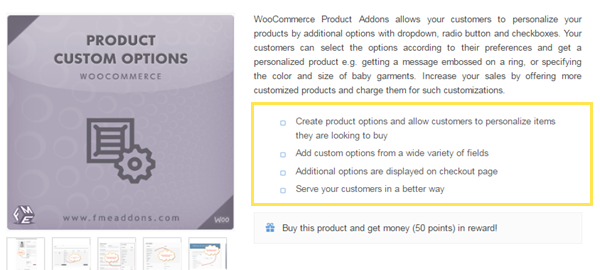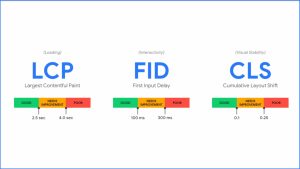Online buyers are in search of finding products that satisfy their needs. They can simply compare an online product with the one available at a shop nearest to their home or office. The internet has made it that easy.
However, in the online shopping world, the SEO friendliness of a product page is all about convenience for the end user. You will be able to write optimized content to cater to the needs, expectations, and common reading behavior of users. The moment you start writing just for the search engine, the copy description of your product may reduce user readability and engagement.
Why writing an SEO-friendly product description is a must
Every search engine works like a web directory and it has to track thousands of websites against a search term. To help the users find relevant websites at the top of the SERPs, the search algorithms tend to evaluate the uniqueness, originality, and relevance of a web page. So, if you want your business to be on top of the search results, you need an SEO-friendly description for the product page.
If you are worried about how to write a product description that is readable and SEO-friendly, please follow the below-mentioned guidelines before you start.
1. Highlight the key features
An eCommerce website often faces tough competition. Consequently, the merchants need to add more and more features to keep their competitive edge. You might put forth more functionalities for the consumers, but not reap the benefits by not highlighting the key features. Thus, it is important to discuss the key selling points of your products within the description.
Online buyers are oftentimes in a hurry, which is why they just scan a view of your landing page sometimes. You can grab their attention by listing the key features within the description. Here is an example of an eCommerce application which clearly dictates the core features.

2. Get product understanding
Without conveying a complete understanding of your product, you may not be able to discuss the features a user is passionately looking for. It requires a writer to understand the purpose of manufacturing or developing a product. You need to know why you’re producing the store items and what are the paint points for the target audiences you’re trying to reach.
An SEO friendly description requires you to acquire complete product understanding before discussing it. Without knowing about a product, one may write a general introduction and that skips the unique selling points. You can try these tips to understand a product and its paint points:
- Know the purpose and use of a product
- Try demo to know ‘how it works’
- Evaluate its key benefits for the intended users
- Ask the developer/manufacturer for technical details
- Conduct your own research
Take a look at the image below, which includes every major and minor detail about the speakers in the description. You can only share such details with authority once you are sure about your products.

3. Define your target audience

Every product has a concerned audience, but it depends on you how quickly you realize it and target them. You need to define the people who are likely to show interest in your products.
You can write brilliant copy for your product when you are aware of the people you need to serve. You can create a buyer persona and refer to it each time you need a reference point while writing a product description. To start with the creation of a buyer persona, evaluate the common behavior of your target audience and map out their pain points.
Merchants, business developers, and copywriters often search for the kind of content intended buyers of a product are interested in. It helps them understand their habits, interests and a complete routine that is addressed in different chunks of a landing page.
4. Use plain language

The selection of words for a product description is critical and may depend on your target audience. Every individual owns a vocabulary which may be different from the other. While writing an essay for university graduates, you may use difficult words. But, when it comes to the readability of a common user, every write-up needs to be simple and in plain language.
Online shopping is a common practice and users do not expect to confront words they are not familiar with. For an eCommerce website, whether your target is a professor or a teenager, it’s better to avoid quite adipose verbosity (like this) and just keep it simple.
In this fast-paced era of mobile commerce, no one wants to spend extra time on your website just to know a product. They want a few simple sentences to grab the idea at a glance and that’s it.
5. Be informative
The search engines are trying to be informative rather than deceptive. So, make your product pages informative by discussing the potential benefits. Praising a product over and again with the usage of phrases like “best-selling”, “most demanding”, “top ranking”, etc. can harm your brand rather than do any good.
An SEO friendly product description describes the core features and benefits along with the practical use of a product or service. Because the search engines are now focused on providing value rather than the ranking the keywords stuffed together on product pages alone. Take the example in this image about sharing valuable information rather than becoming promotional.

6. Write unique and distinct copy
The uniqueness of a product page is a core element in SEO. A few years ago, most of the marketers used to copy product descriptions of a competitor and make necessary changes to make it look unique. Then, the search algorithms were not smart enough to examine the meaningless spinning and rephrasing.Now it’s not the same.
Uncovering duplicate content is much more refined and the search engines value the originality of your product descriptions. You may take inspiration from other products in the market, but come up with a description that is written from the scratch. Normally, the product descriptions are not lengthy, so copying a short sentence may secure you a plagiarism penalty.
Quick tips to review:
- Define a content structure. Web users usually scan the content in an F-shape reading pattern.
- Start with the core features of your product.
- Add benefits to remove customer guilt after making a purchase.
- Discuss practical examples to let them know the different usages and capabilities of the product.
- Aim to write for your buyer persona and not the search engine bot.
7. Add keywords strategically
The unnecessary use of keywords is going to hurt your ranking. The search engines are likely to scan the entire paragraph and judge how much it is meaningful. If you try to inject a keyword more than 2-3 times in a 200-300 word document, it can signal the SERPs to remove your product page from top rankings for spam or keyword stuffing. Here are a few tips for you to consider.
- Avoid keyword stuffing
- Use LSI (Latent Semantic Indexing) Keywords
- Add keyword in the headline, subheadings and body content of a landing page
- Optimize images by inserting keywords in the file name, ALT tags and image description
- Do not aim writing for the search engines.
- First write an informative description, then optimize it for SEO.
You can get inspiration from this landing page, where the keyword ‘iPhone’ is used naturally in title and description.

8. Try to be realistic
There is no need to exaggerate the prominence of your products. A variety of online consumers reach a landing page after extensive research. They keep an eye on your activities to determine the quality you deliver. They may often seek recommendation about your offerings from different platforms and web communities. So, be careful in claiming your store items be trustworthy, best in town, or highly demanding.
If you are new to the market, don’t claim to be an industry leader. It is malpractice and your target audience will find it difficult to trust you. Accept that you are new and declare your expertise for working individually or under the banner of different brands.
Final Thoughts
Writing well-optimized product descriptions is a continuous experience of improvement. Whenever you finish up writing sales copy, you review it after a month or two and find more room for development. You cannot stick to a one-dimensional approach and say it will work as long as you continue business.
There are numerous ways of describing a product, but you need to select a friendlier tone and highlight the features that are high in demand. If you evaluate your competitors, their landing pages may seem to be really good, but there may be a lack of information or explanation for the end consumer.
To succeed in your business niche, you need to fill in the missing gaps by drafting an SEO-friendly description that exclusively highlights the core benefits of your products and makes you a winner in the eyes of potential buyers. We hope the above guidelines will prove helpful for you to create compelling introductions and feature lists of your offerings.
Digital & Social Articles on Business 2 Community(131)
Report Post






